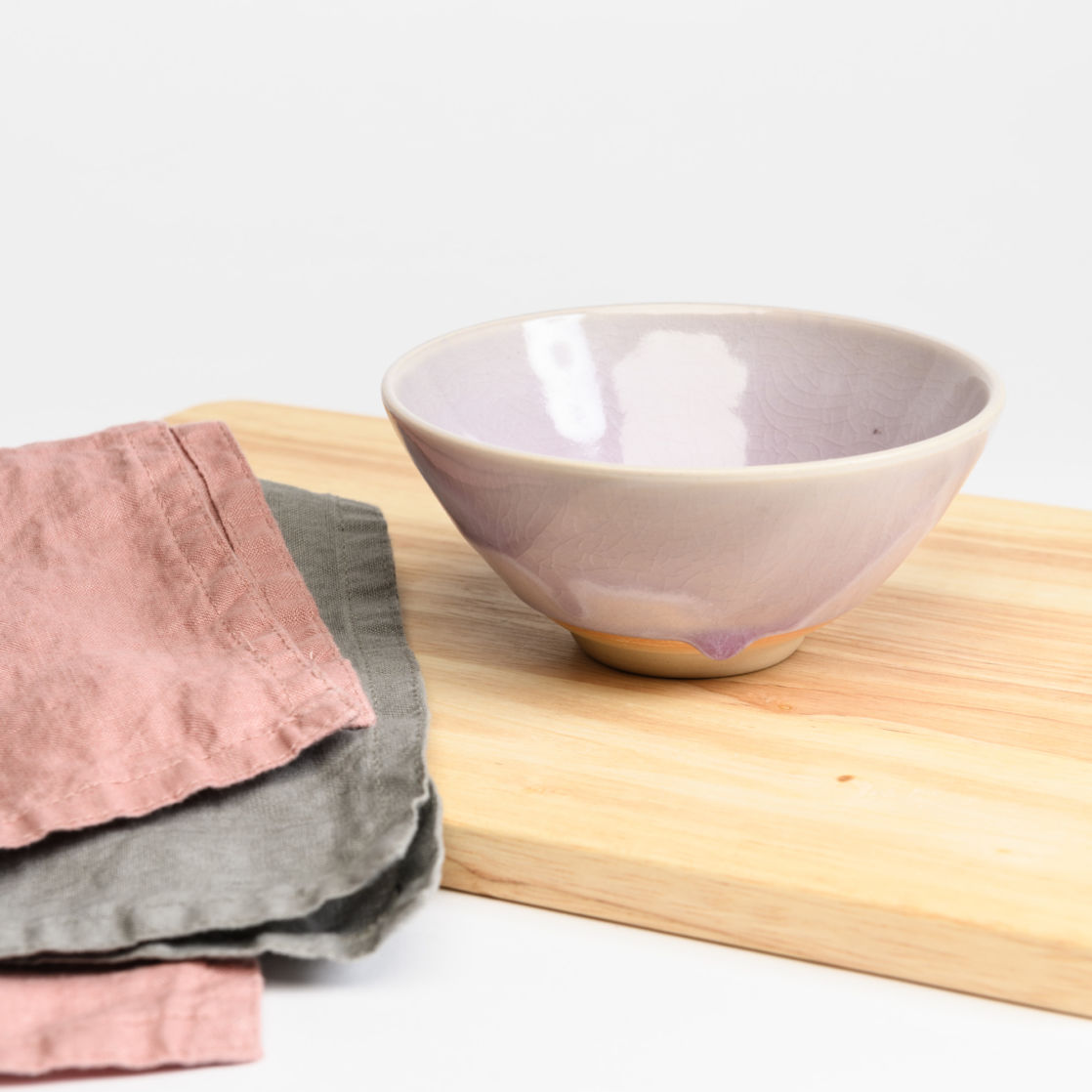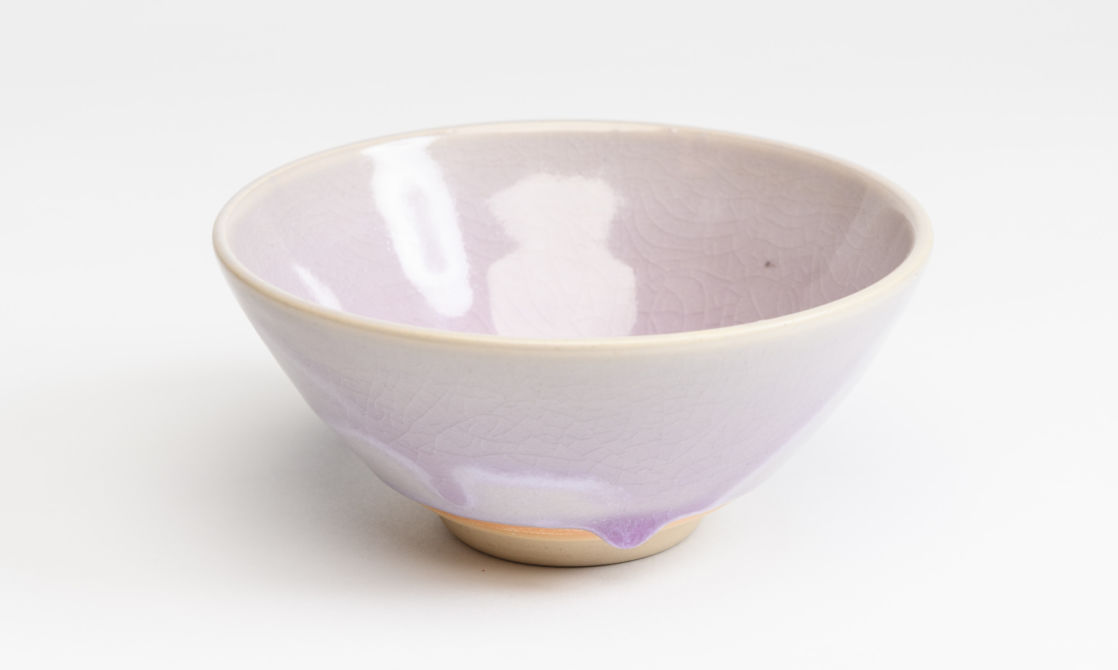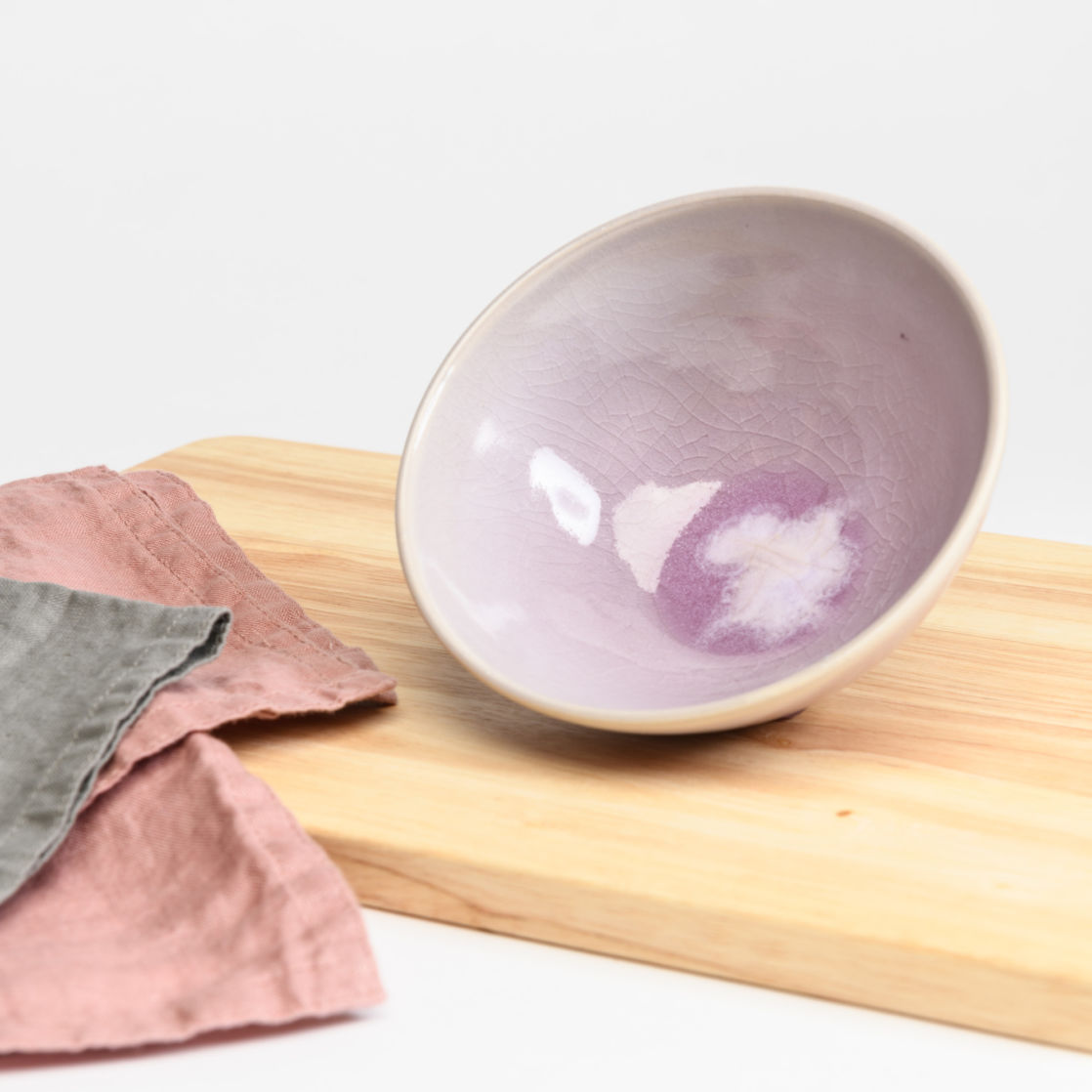Welcome to Ceramic Review
Ceramic Review is the magazine for contemporary and historical ceramics, ceramic art and pottery.
Ceramic Review Issue 334
July/August 2025
Ceramic Review is the magazine for contemporary and historical ceramics, ceramic art and pottery.
July/August 2025
Raquel Acosta has dedicated her creative practice to developing a wide range of glazes for the surfaces of her functional ceramics. Here she shares the recipe for her subtle lilac crackle glaze

Work by Raquel Acosta; courtesy of the artist
I create my pottery from my garden studio in South West London. I find joy in making simple everyday objects beautiful – beauty that is made to be part of your daily life. I chose the name Glaze Me Pretty for my ceramics line when I was first learning how to make pots. Back then I didn’t know anything about glazes but found them fascinating. When I discovered that glazes form crystals while molten, in the same way as rocks and minerals form beneath the Earth’s surface, I knew it was what I wanted to make. I develop each glaze over months in search of a quality that makes it unique. For example, it could be glazes with crystals formed by molecules bonding in a beautiful pattern that will be different on each piece. The glaze I have chosen to share here is part of a set of tests aimed to explore the behaviour of four different pairs of fluxes. I developed chemically similar glaze bases with four flux combinations: sodium-strontium, sodium-barium, lithium-strontium and lithium-barium. I kept the alumina level the same across all tests and tested nine different amounts of silica on each base to achieve a range of finishes from matte to gloss. I then tested the 36 separate bases with no colourant, with copper and with cobalt. All four flux combinations produced similar results on the gloss side of the tests, with a very clear surface and vibrant colours. On the matte tests, there were subtle differences in texture, ranging from very smooth and almost glittery mattes to waxy mattes with streaks.
I selected one of the sodium-strontium bases to do a volumetric colour blend with copper, cobalt, nickel, chromium, iron, manganese and rutile. This is a great way to find interesting colours with relatively low effort, as a total of 28 different colours are produced from combining the seven oxides. Finally, I tried with three rare earths: erbium, neodymium and praseodymium. My favourite colours from all these tests were copper, chromium and this lilac neodymium.

Work by Raquel Acosta; courtesy of the artist

Work by Raquel Acosta; courtesy of the artist
RECIPE:
Soda feldspar 25g
Strontium carbonate 32g
Borax frit 12g
Quartz 24g
EPK Kaolin (China clay) 7g
Neodymium oxide 7.9g
I fire to Cone 7
NOTE:
The neodymium oxide is from US Pigment, the rest of the ingredients are from Scarva
For more details visit glazemepretty.com